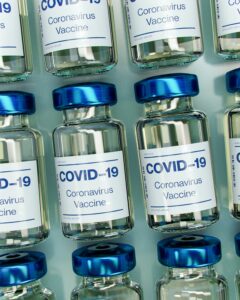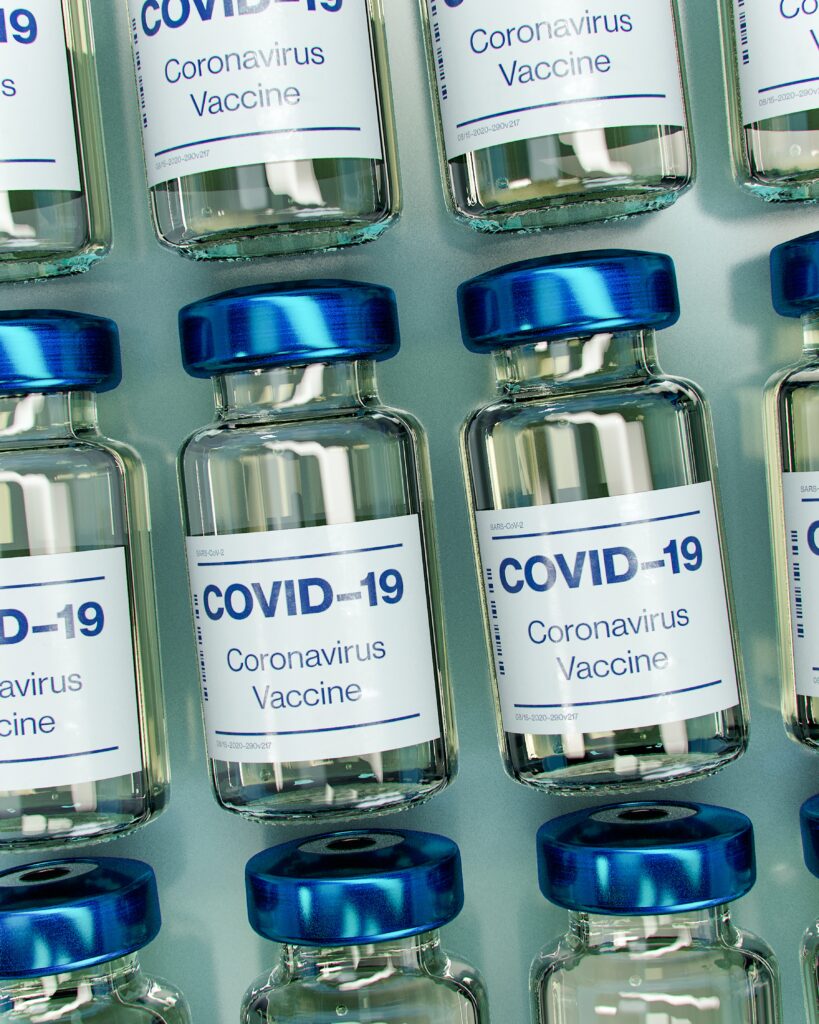By: Tanner Henson
In 1970, Congress enacted the Occupational Safety and Health Act (“OSH Act” or “the Act”), a sweeping piece of legislation, aimed at “assur[ing] so far as possible every working man and woman in the Nation safe and healthful working conditions[.]”[1] To enforce the new legislation, Congress created a new government agency, the Occupational Safety and Health Administration (“OSHA”),[2] under the authority of the Secretary of Labor.[3]
Under the OSH Act, OSHA primarily seeks to protect the American workforce by promulgating specific standards through its formal rulemaking process, either “on its own initiative or in response to petitions submitted to the agency by various government agencies, the public, or employer and employee groups.”[4] This is traditionally a time-consuming process. Between 1981 and 2010, the Congressional Research Service found that on average, ninety-three months elapsed between OSHA beginning formal consideration of a specific standard and its promulgation.[5] The same study further indicated that this average is generous, as it did not include time spent preliminary to formal proposal of the rule, which often includes years “developing the idea for the standard and meeting with stakeholders.” [6] It also did not include the time spent in judicial review.[7] When these time periods were included, the Congressional Research Service found that it was not uncommon for 138 months to elapse between the inception of the idea behind the specific standard and its enactment.[8]
Given this onerous process, OSHA cannot issue specific standards for every hazard the working public might encounter. Aware of this reality, the drafters of the Act included a useful catchall—the general duty clause—which provides that at a minimum, each employer “shall furnish to each of his employees employment and a place of employment which are free from recognized hazards that are causing or are likely to cause death or serious physical harm to his employees[.]”[9] However, to establish a general duty clause violation, the Secretary of Labor must establish that “(1) a condition or activity in the workplace presented a hazard; (2) the employer or its industry recognized the hazard; (3) the hazard was causing or likely to cause death or serious physical harm; and (4) feasible and effective means existed to materially reduce the hazard.”[10] While the general duty clause serves a necessary function—it allows OSHA to hold businesses accountable for harms caused by known hazards not covered by a specific standard—in practice, the Secretary is most often successful in proving these elements where death or serious injury has already occurred,[11] which hampers its effectiveness.
As the formal rulemaking process is time-consuming,[12] and the general duty clause lends itself to retroactive applications,[13] the Congressional drafters of the OSH Act included a seldom mentioned alternative, which allows the Secretary of Labor to promulgate an Emergency Temporary Standard (“ETS”) with immediate effect, “if he determines (A) that employees are exposed to grave danger from exposure to substances or agents determined to be toxic or physically harmful or from new hazards, and (B) that such emergency standard is necessary to protect employees from such danger.”[14] However, in its fifty year history, OSHA has issued just ten emergency temporary standards, six of which have been challenged in the courts, with only one surviving judicial review.[15] In fact, until November, OSHA had not issued an ETS since 1983,[16] when the Fifth Circuit invalidated the administration’s ETS seeking to decrease the acceptable levels of asbestos exposure in the workplace.[17]
On November 5, 2021, in response to an order from President Biden,[18] OSHA did what it had not done in nearly forty years;[19] it promulgated an ETS mandating that employers with more than 100 employees either require employees to undergo weekly COVID-19 testing or become fully vaccinated by January 4, 2022 (“ the mandate”).[20] However, two days after OSHA enacted its ETS, the Fifth Circuit stayed the mandate’s enforcement “pending briefing and expedited judicial review.”[21] After review, the court reaffirmed its initial stay,[22] halting enforcement across the nation, holding that the petitioners were likely to succeed on the merits as the OSH Act did not confer on OSHA constitutional authority “to make sweeping pronouncements on matters of public health.”[23] The court wrote further, entertaining what it called “the dubious assumption that the mandate does pass constitutional muster[,]”[24] noting that the mandate was improperly tailored.[25] Specifically, the court wrote that the mandate was “both overinclusive (applying to employers and employees in virtually all industries and workplaces in America, with little attempt to account for the obvious differences between the risks facing, say, a security guard on a lonely night shift, and a meatpacker working shoulder to shoulder in a cramped warehouse)[,]”[26] as well as underinclusive, as the mandate purports to “save employees with 99 or more coworkers from a ‘grave danger’ in the workplace, while making no attempt to shield employees with 98 or fewer coworkers form the very same threat.”[27] The court further questioned whether such an ETS is needed, as the “entire globe” has endured the “emergency” for nearly two years.[28]
Following the Fifth Circuit’s ruling on November 16, “the Judicial Panel on Multidistrict Litigation consolidated the cases challenging the ETS.”[29] When this occurred, the panel conducted a random lottery involving all U.S. Courts of Appeal and transferred the consolidated case to the Sixth Circuit,[30] where a divided panel reinstated the mandate,[31] holding “that OSHA’s authority includes protection against infectious diseases . . . .”[32] The court further stated that “it makes sense that OSHA’s authority contemplates the use of medical exams and vaccinations as tools in its arsenal.”[33] The court took particular issue with the Fifth Circuit’s skepticism regarding the emergency, providing that “it is difficult to imagine what more OSHA could do or rely on to justify its finding that workers face a grave danger in the workplace.”[34]
After the Sixth Circuit’s ruling, it appeared briefly that the mandate would go into effect on January 10;[35] however, on December 22, the Supreme Court announced that it would hold a special session on January 7, 2022 to hear arguments in a challenge to the mandate.[36] During those arguments, the Court’s three liberals signaled support for the mandate, with Justice Breyer stating “[t]here are 750,000 people who got this yesterday. Hospitals are full to overflowing. There is a problem. It seems to me that every minute these things are not in effect, thousands more people are getting this disease[.]”[37] However, given the Court’s current conservative majority, for the liberal justices to prevail, the vote of Chief Justice Roberts is of practical necessity.[38] During arguments, the Chief Justice signaled his ultimate disapproval of the mandate in a troubling back-and-forth for its proponents, stating specially, “[i]t sounds like the sort of thing that states will be responding to or should be or—and that Congress should be responding to or should be, rather than agency by agency, the federal government, the executive branch, acting alone[.]”[39]
Given the tenor of oral argument, it came as little surprise that on January 13, the Supreme Court reversed the Sixth Circuit, granting the petitioners’ application to stay enforcement of the mandate.[40] The Court found that the petitioners were likely to succeed on the merits of their case, agreeing with the Fifth Circuit and characterizing the mandate as a “blunt instrument” that “draws no distinctions based on industry or risk of exposure to COVID-19.”[41] The Court, however, also found “that the Secretary lacked authority to impose the mandate.”[42] Noting that OSHA can only exercise power that Congress provides by statute, the Court analyzed the language of the ETS statute and concluded that it empowered OSHA “to set workplace safety standards, not broad public health measures.”[43] The Court further took issue with the characterization of COVID as a work-related danger, noting that “[a]lthough COVID-19 is a risk that occurs in many workplaces, it is not an occupational hazard in most. COVID-19 can and does spread at home, in schools, during sporting events, and everywhere else that people gather.”[44] The Court reasoned, that the risk presented by COVID-19 is little different than “the day-to-day dangers that all face from crime, air pollution, or any number of communicable diseases. Permitting OSHA to regulate the hazard of daily life—simply because most Americans have jobs and face those same risks while on the clock—would significantly expand OSHA’s regulatory authority without clear congressional authorization.”[45]
Whatever the Courts ultimate ruling on the merits, its opinion granting petitioners’ request for an emergency stay both clarifies the meaning of the terms “workplace” and “occupational hazard,” as they appear in the statute, as well as provides a rare glimpse into the confines of OSHA’s emergency rulemaking authority.
[1] 29 U.S.C. § 651(b).
[2] About OSHA, https://www.osha.gov/aboutosha (last visited Jan. 13, 2022).
[3] 29 U.S.C. § 652(1).
[4] Scott D. Szymendera, Cong. Rsch. Serv., R46288, Occupational Safety and Health Administration (OSHA): COVID-19 Emergency Temporary Standards (ETS) on Health Care Employment and Vaccinations and Testing for Large Employers 1 (2022).
[5] Id. at 3.
[6] Id.
[7] Id.
[8] Id.
[9] 29 U.S.C. § 654.
[10] Michael A. Logan, Regulation of Workplace Violence Under OSHA’s “General Duty” Clause, Kane Russell Coleman Logan (May 22, 2019), https://www.krcl.com/insights/regulation-of-workplace-violence-under-oshas-general-duty-clause.
[11] See Opinion at 22, Secretary of Labor v. Integra Health Management, Inc., (2019) (No. 13–1124), https://www.chamberlitigation.com/sites/default/files/cases/files/19191919/Opinion%20–%20Secretary%20of%20Labor%20v.%20Integra%20Health%20Management%2C%20Inc.%20%28Occupational%20Safety%20and%20Health%20%28OSH%29%20Review%20Commission%29_0.PDF (finding a violation of the general duty clause where a healthcare service coordinator was stabbed to death by a mentally unstable client).
[12] See supra notes 4–8.
[13] See supra notes 9–11.
[14] 29 U.S.C. § 655(c)(1).
[15] BST Holdings, LLC v. Occupational Safety and Health Admin., U.S. Dep’t of Lab., 17 F.4th 604, 609 (5th Cir. 2021).
[16] Syzmendera, supra note 4, at 1.
[17] Asbestos Information Ass’n/North Am. v. Occupational Safety and Health Admin., 727 F.2d 415, 425–27 (5th Cir. 1984).
[18] Press Release, The White House, New OSHA and CMS Rules Mean Two-Thirds of All Workers Now Covered by Vaccination Rules (Nov. 4, 2021), https://www.whitehouse.gov/briefing-room/statements-releases/2021/11/04/fact-sheet-biden-administration-announces-details-of-two-major-vaccination-policies/.
[19] See supra note 16.
[20] 29 C.F.R. § 1910.501(m) (2021).
[21] BST Holdings, 17 F.4th at 609.
[22] Id.
[23] Id. at 611 (citing Ala. Ass’n of Realtors v. Dep’t of Health and Human Servs., 141 S. Ct. 2485, 2488 (2021)).
[24] Id.
[25] Id.
[26] Id.
[27] Id.
[28] Id.
[29] Sixth Circuit Lifts Stay of OSHA Emergency Vaccine Mandate For Large Employers, McGuireWoods (Dec. 19, 2021), https://www.mcguirewoods.com/client-resources/Alerts/2021/12/sixth-circuit-lifts-stay-of-osha-emergency-vaccine-mandate-for-large-employers.
[30] Id.
[31] In re. MCP No. 165, No. 21–4027, slip op. at 37 (6th Cir. Dec. 17, 2021).
[32] Id. at 36.
[33] Id. at 13–14.
[34] Id. at 25.
[35] Lisa Nagele-Piazza, OSHA’s Vaccine-Or-Testing Rule is Back, Unless Supreme Court Says Otherwise, SHRM (Dec. 20, 2021), https://www.shrm.org/resourcesandtools/legal-and-compliance/employment-law/pages/sixth-circuit-osha-ets.aspx.
[36] Stuart M. Gerson & Traycee E. Klein, Supreme Court Grants Rare Hearing On Stays In Vaccine Mandate Cases, Ntl. L. Rev. (Dec. 29, 2021), https://www.natlawreview.com/article/supreme-court-grants-rare-hearing-stays-vaccine-mandate-cases.
[37] Megan Leonhardt, The Supreme Court Just Signaled It Could Block Biden’s Nationwide Vaccine Mandate, Fortune (Jan. 7, 2020, 4:43 PM), https://fortune.com/2022/01/07/supreme-court-biden-vaccine-mandate/.
[38] See Amelia Thomson-DeVeaux, Roberts is the New Swing Justice. That Doesn’t Mean He’s Becoming More Liberal, FiveThirtyEight (July 16, 2020), https://fivethirtyeight.com/features/roberts-is-the-new-swing-justice-that-doesnt-mean-hes-becoming-more-liberal/.
[39] Amy Davidson Sorkin, Vaccine Mandates Have a Bad Day at the Supreme Court, Atl. (Jan. 8, 2022), https://www.newyorker.com/news/daily-comment/vaccine-mandates-have-a-bad-day-at-the-supreme-court.
[40] Nat’l Fed’n of Indep. Bus. v. Dept. of Lab, Occupational Safety and Health Admin., Nos. 21A244 and 21A247, slip op. at 9 (U.S. Jan. 13, 2022).
[41] Id. at 3.
[42] Id. at 5.
[43] Id. at 6.
[44] Id.
[45] Id. at 6–7.



